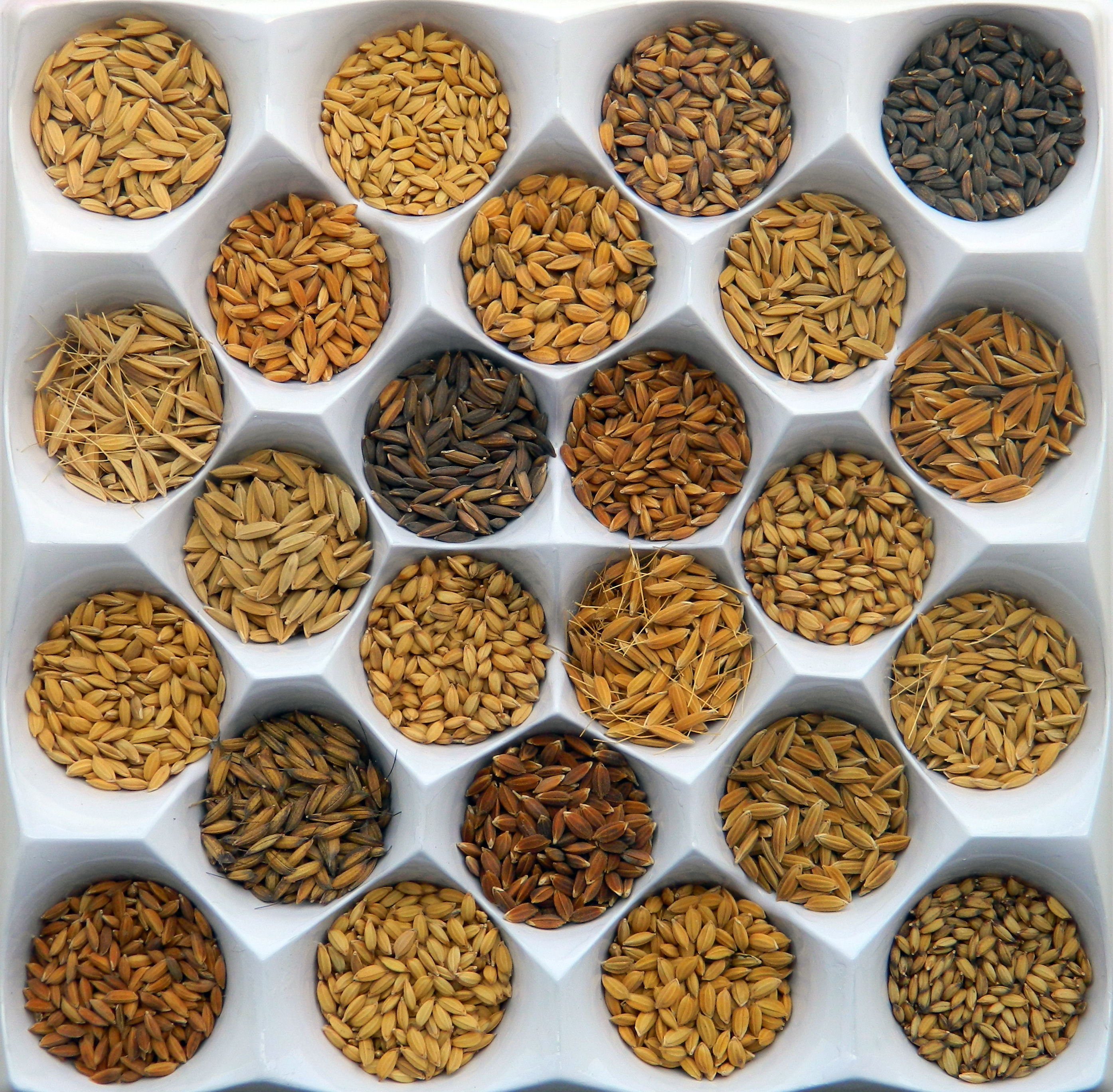
Pritesh Roy completed a M.Sc. in Biotechnology and has been working on his Doctoral research at the Central Rice Research Institute (Indian Council of Agricultural Research) since 2009. After spending his childhood in a small village, Pritesh noticed how “the beauty of nature in those areas is quite fascinating, and is often lacking in cities.”
As a botanist, he has always had a keen desire for the protection of natural floras. Upon recently visiting areas of rice research, he observed remarkable erosion of native landraces due to the introduction of high yielding varieties. This inspired him to bring it to the attention of people with a childhood hobby – photography.
“My mentor Dr. GJN Rao, one of the pioneer scientists in rice research, has always encouraged me to represent my thoughts more and more precisely and what else could be most suitable then a single piece of photography to present the rice diversity and the importance of conservation.”
Can you explain a bit more about this image?
This image shows the diversity of aromatic rices in India for lemma-palea colour, grain shape and size and presence or absence of awns. At the Central Rice Research Institute we have hundreds of native aromatic rice germplasm collected from different parts of India.
I found a discarded chocolate case which I thought to use in some aspect and utilized it as a platform for uniformly placing the rice grains shown in the image. I never expected that the simple image could be so effective. I am quite happy that rather than writing several pages, only a simple image can urge for preservation of natural heritages which is rapidly declining over the years.
When I captured this photograph of rice diversity, I thought of putting it on social media to raise awareness to different professions who are not directly connected to natural heritages. But the ‘BMC Ecology image competition’ provided a bigger platform for me to do this, and has also nicely represented the beauty of nature in different categories through images including mine.
Why is this staple crop so important?
Rice is the only cereal whose every plant part is being used in several aspects. Rice, undoubtedly the staple food crop of billions, is nutritionally rich and contributes approximately 40–80% of calories and 40% of the protein in the Asian Diet.
Over thousands of years, rice has shaped the culture, diet and economy of millions of people worldwide. The year 2004 was designated as the ‘International Year of Rice’ by the United Nation, reflecting the significance and importance of rice for human community.
You capture the great diversity of rice grains in your image. Is each grain utilized differently and if so, how?
The image represents diversity of native aromatic short grain rices.
India is one of the major exporters of Basmati rice but the indigenous short grain aromatic rice grown in different agro-climatic zones are consumed locally. Other than Basmati, the indigenous short grain aromatic rices are grown in localized pockets in almost all states of the country.
These rices possess a unique aroma; cooking and eating qualities are consumed locally as a delicacy. These specialty rices are treated as sacred among people and many of them are being used in several temple duties.
Farmers of different regions cultivate and exercise selection practices according to their traditional perception and ethnic values and therefore the grain types in these aromatic rices represent their geographical area of cultivation. Specifically most of these aromatic rices are pudding for different auspicious occasions.
How did you become involved in studying rice?
In the era of high yielding rice varieties and hybrids, the short grain aromatic varieties have gained less research attention for their low yielding ability.
After completion of my Masters in Biotechnology, I had the opportunity to undertake my Doctoral work at Central Rice Research Institute, one of the premier rice research institutes in the world. In the era of high yielding rice varieties and hybrids, the short grain aromatic varieties have gained less research attention for their low yielding ability.
Having a large assembly of these speciality rice in our Institute, I designed my work for characterization (both at agro-morphological and molecular level) of aromatic short grain rice landraces which could provide insights into their genetic potential thereby strengthening their logical conservation strategies.
Why is it important to study the traits and genes of this diverse crop?
Yield stagnation is a major concern for many cultivated crops in different parts of the world. There is an urgent need to breed high yielding varieties having nutritional properties, disease pest resistance and tolerance to biotic and abiotic stress.
However, the rapid climate change scenario has made the issue more critical. Therefore, understanding the trait expression in different agro-climatic conditions is a predominant thrust. Identification of valuable traits available in diverse crop groups and isolating/mining novel allele(s)/gene(s) underlying such traits could be valuable to develop superior varieties and feeding millions in the future.
What do you think future research holds for this crop?
Worldwide rice research is moving fast. The resource poor, small and marginal farmers majorly depends on their own varieties which we call landraces. Genetic enhancement of these rice landraces can play important roles in the economic upliftment of many farmers.
Further, trait specific characterization of the germplasm will lead to identification of new sources for many superior traits that can be used for future rice improvement.
You can find out more about why this image won our competition and view all the winning images in our accompanying editorial.
Comments